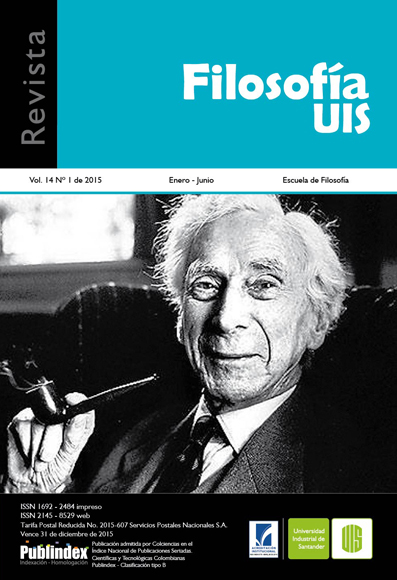Indistinction and inefficacy: interweaving observations between art and politics in the artistic scenario of twentieth century
Published 2015-06-05
Keywords
- Danto,
- art,
- politics,
- Ranciére,
- inefficacy
How to Cite
Copyright (c) 2015 Mariano Martínez Atencio

This work is licensed under a Creative Commons Attribution 4.0 International License.
Abstract
This paper seeks to relate some central issues from Danto and Ranciére’s theoretical developments with some form of avant garde art developed in Argentina in the twentieth century. In a first instance are taken into account both forms of artistic and political denunciation as paradigms of overlapping and indistinctness exemplified by El Siluetazo and Tucumán Arde. Danto will offer the indiscernibility concept to think about art and with Ranciére will be evaluated the degree of impugnation claimed for the critic art facing the examples offered.
Downloads
References
- Danto, A. (1964). “The Artworld”. The Journal of Philosophy. Vol. 61 (19). pp. 571-584.
- Danto, A. (1986). The Philosophical Disenfranchisement of Art. New York: Columbia University Press.
- Danto, A. (2004). La transfiguración del lugar común. Buenos Aires: Paidós.
- Danto, A. (2006). Después del fin del arte: el arte contemporáneo y el linde de la Historia. Buenos Aires: Paidós.
- Danto, A; Chateau, D. y otros (eds.). (2005). “Tres cajas de brillo: cuestiones de estilo”. Estética después del fin del arte. Ensayos sobre Arthur Danto. Madrid: Antonio Machado Libros S. A.
- Dickie, G. (2005). El círculo del arte. Buenos Aires: Paidós.
- Goodman, N. (1976). Los lenguajes del arte. Barcelona: Seix Barral.
- Goodman, N. (1990). Maneras de hacer mundos. Madrid: Visor.
- Lamarque, P. & Stein Haugom Olsen (eds.). (2004). Aesthetics and the Philosophy of Art, the Analytic Tradition. Massachusetts: Blackwell Publishing.
- Longoni, A. y Bruzzone, G. (comp). (2008). El Siluetazo. Buenos Aires: Adriana
- Hidalgo editora.
- Padín, C. (dir.). (1971). “Tucumán Arde”. Revista Ovum 10. Número 9. pp. 1-22.
- Ranciére, J. (1996). El desacuerdo. Política y filosofía. Buenos Aires: Nueva Visión.
- Ranciére, J. (2010). El espectador emancipado. Buenos Aires: Ediciones Manantial.
- Ranciére, J. (2011). El malestar en la estética. Buenos Aires: Capital Intelectual.
- Bozal V. (ed.). (1996). Historia de las ideas estéticas y de las teorías artísticas contemporáneas, Vol. I y II. Madrid: Visor.
- Vilar, G. (2005). Las razones del arte. Madrid: Visor.
- Wetiz, M. (1956). “The Role of Theory in Aesthetics”. Journal of Aesthetics and Art Criticism. Volumen 15 (1). pp. 27-35.
